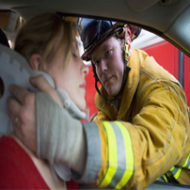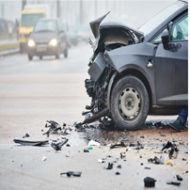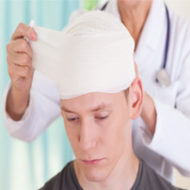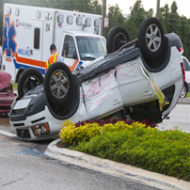Baltimore Car Accident Lawyers: Roundabouts Can Curb Accidents
March 25, 2017According to the Federal Highway Administration, approximately 40% of car accidents and over 20% of traffic fatalities in the United States take place at busy intersections. This is not surprising considering many intersections have multiple lanes with traffic signals directing cars traveling in a number of different directions, often during rush hour when people are » Read More
Baltimore Car Accident Lawyers: Whiplash
March 23, 2017Whiplash is one of the more common injuries associated with car accidents. The impact of a car hitting another vehicle or an object like a tree or phone pole causes the driver’s neck to snap forward and backwards like a whip. Victims of whiplash often experience symptoms for months, sometimes even years, after the wreck, » Read More
Baltimore Car Accident Lawyers: Deadly Driving Distractions
March 21, 2017The automotive industry has made significant advancements in safety technology over the years, from seat belts and airbags, to collision warning systems and rollover prevention technology. Yet, the number of accident-related deaths is the highest it has been in close to a decade. Last year alone, approximately 40,000 people died in car accidents. Officials believe » Read More
Baltimore Car Accident Lawyers: Head-On Collisions
March 17, 2017The sheer force of a head-on collision can cause severe injuries to those involved, if they are lucky enough to survive the impact at all. While airbags and seatbelts have helped reduce the number of fatalities, these wrecks continue to occur, resulting in severe and often fatal injuries. Fortunately, head-on collisions are relatively rare, but » Read More
Baltimore Car Accident Lawyers: Long-Term Effects of Concussions and Driving
March 16, 2017Like any head injury, concussions can have lasting effects on a person’s ability to successfully perform simple daily activities, even after the initial symptoms of the concussion have disappeared. Until recently, there has been no research on the long-term effects of a concussion on a person’s ability to drive. Researchers at the University of Georgia’s » Read More
How Autonomous Vehicles Make Driving Decisions
March 15, 2017According to the auto industry, autonomous vehicles are the wave of the future. Research has shown significant reductions in traffic-related injuries and fatalities, as well as notable improvements in efficiency and safety. However, some consumers question whether these vehicles are too good to be true. Despite the benefits, consumers have ethical concerns about how these » Read More
Baltimore Car Accident Lawyers Discuss School Bus Safety
March 10, 2017There is an overwhelming amount of research that proves how effective seat belts are at saving lives in the event of a car accident. However, while most buses do come equipped with seat belts, there are no laws requiring children to wear them. Although the incidence of fatal school bus accidents are rare, most people » Read More
Baltimore Car Accident Lawyers: Traffic Fatalities Peak in 2016
March 9, 2017Recent findings from the National Safety Council and the National Highway Traffic Safety Administration show roadside fatalities are higher than they have been in close to a decade. A number of factors have contributed to this steady rise, including low gas prices, an improving economy, and hazardous driving behavior like texting and driving and driving » Read More
Baltimore Car Accident Lawyers: Daylight Savings Time
March 6, 2017Daylight Savings Time begins on the last Sunday in March and is in effect through the last Sunday in October. Although many people enjoy the increase in daylight hours that accompanies the time change, recent research suggests that even small disruptions in sleep or loss of sleep can have a dramatic impact on health and » Read More
Baltimore Car Accident Lawyers: Autonomous to Manual Driving
March 3, 2017As companies like Tesla, Google, and others continue to perfect their autonomous car technology, researchers have been studying the cars’ safety issues, particularly when the driver is required to regain manual control of the vehicle. Researchers from Stanford University found that this transition period posed significant safety risks because of the amount of time it » Read More
















